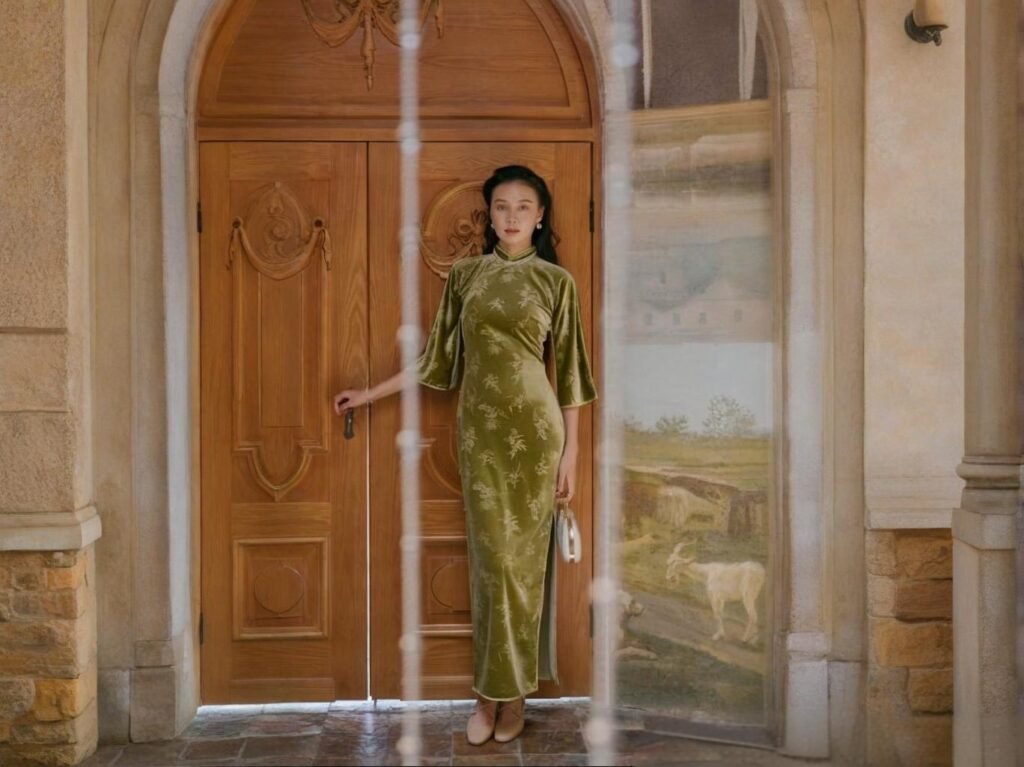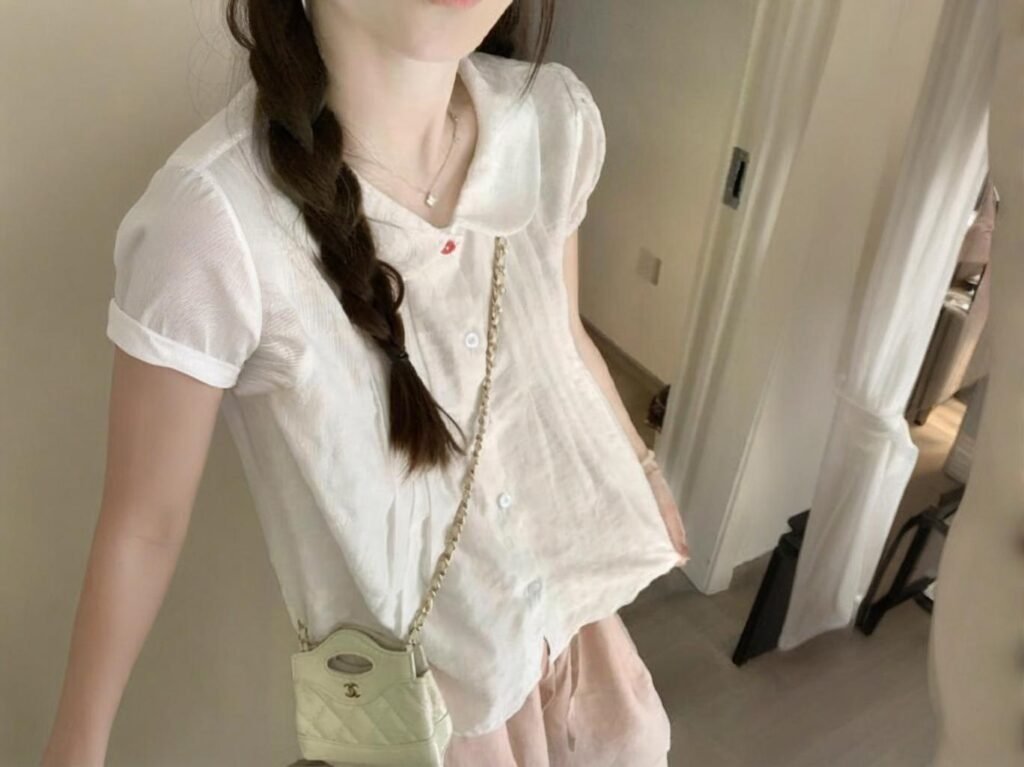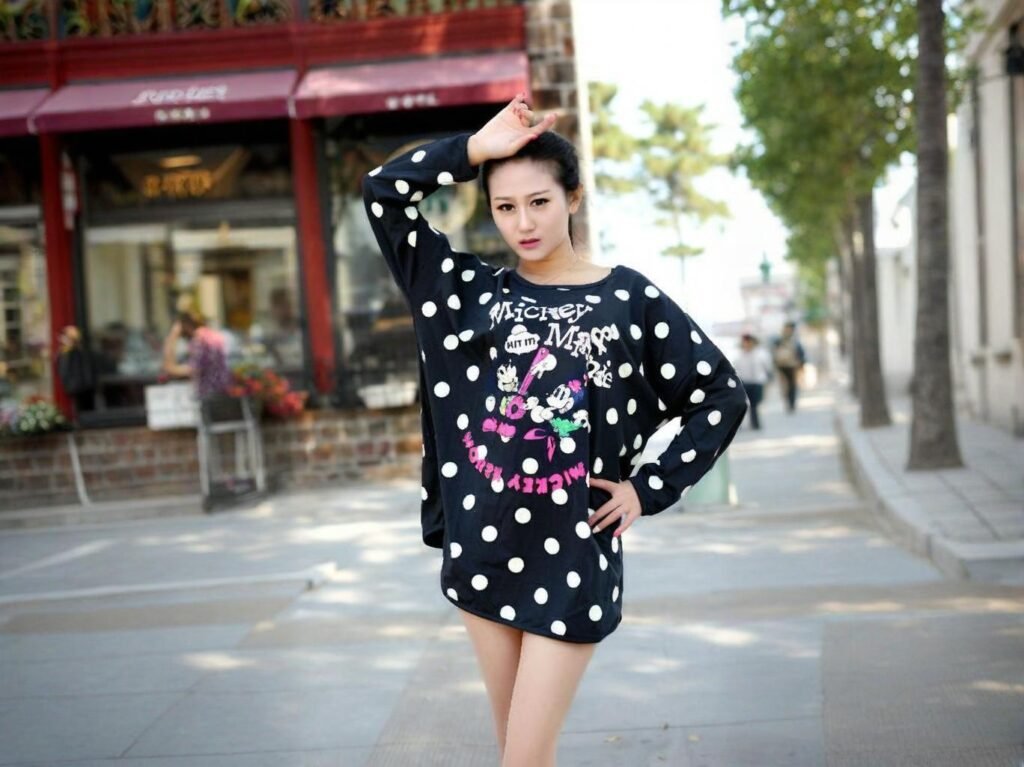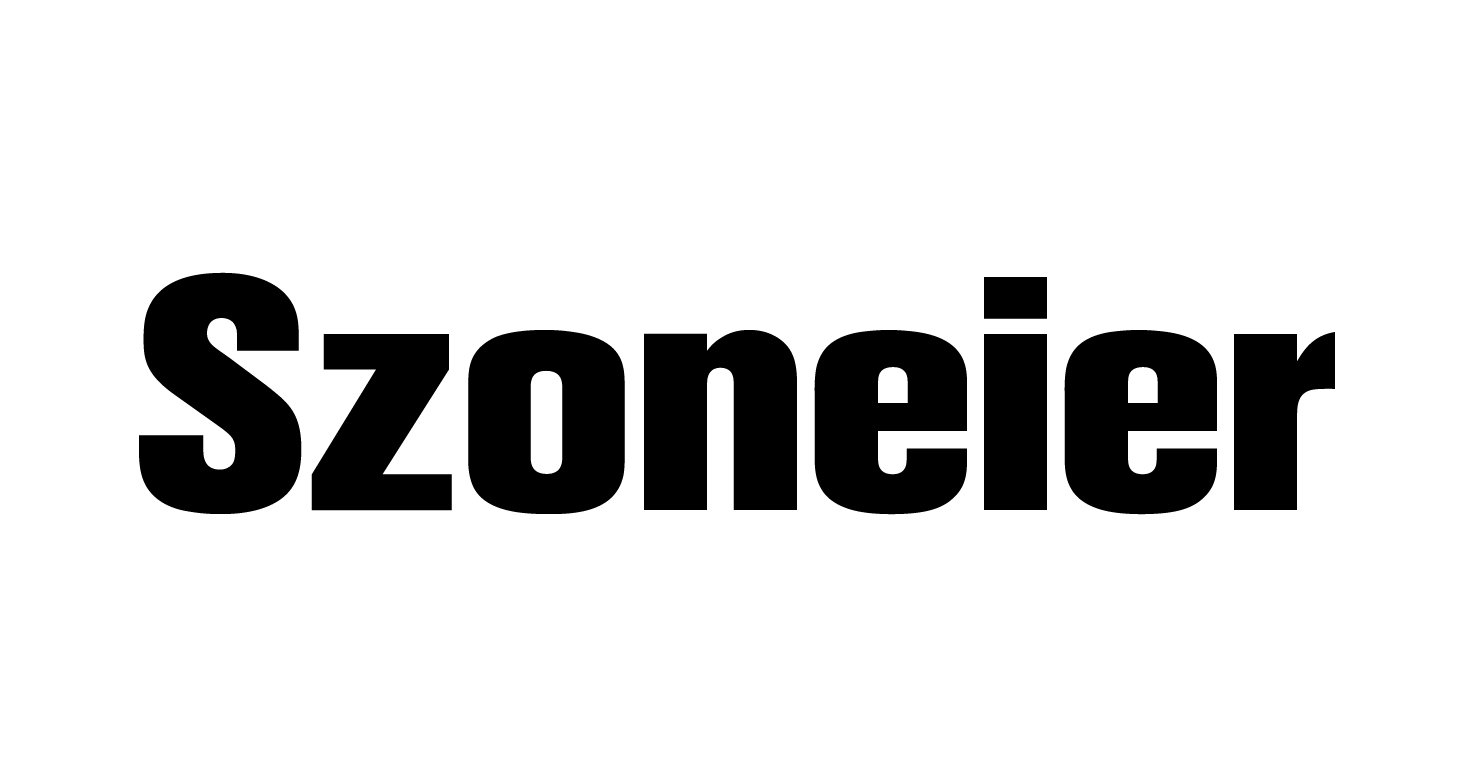In today’s outerwear market, customization isn’t just a value-added feature—it’s the core of product identity. Among all materials, polyester has emerged as the go-to choice for brands looking to create lightweight, durable, and high-performance jackets that align with fast-changing consumer tastes. But creating a custom polyester jacket goes beyond fabric selection; it’s about understanding production timelines, minimum order quantities (MOQ), and how various print methods behave on synthetic fibers.
Custom polyester jackets offer unmatched production speed, vibrant print compatibility, and excellent durability—making them ideal for brands seeking scalable, customized outerwear solutions.
At the intersection of utility and creativity, polyester jackets have found applications across athleticwear, corporate uniforms, event giveaways, and private label fashion. Consider this: A startup in Germany commissioned a 500-piece order of lightweight polyester windbreakers with sublimated logos and mesh lining. The total lead time? Just 18 days from sample approval to doorstep delivery. That’s the kind of flexibility brands need to stay competitive.
So how do MOQ, lead time, and printing options influence your decision when customizing polyester jackets? Let’s break it down with data, manufacturing insights, and real-world use cases.
What Are the Key Advantages of Using Polyester for Custom Jackets?

Polyester is chosen for custom jackets primarily because of its lightweight durability, resistance to wrinkling and shrinking, and compatibility with modern printing technologies like sublimation. It offers production consistency and performance that natural fibers can’t match in high-output manufacturing.
Why Polyester Dominates in Custom Outerwear
Durability & Weather Resistance
| Feature | Polyester Jacket | Cotton Jacket |
|---|---|---|
| Water Resistance | High (with DWR) | Low unless treated |
| Wrinkle Resistance | Excellent | Poor |
| UV Resistance | Moderate to High | Low |
| Shrinkage After Wash | Very Low | Moderate to High |
- Wind and water resistance: When treated with a DWR (durable water repellent) finish, polyester performs well in wet and windy climates.
- Fade-resistant color: Unlike cotton, polyester resists UV fading, retaining color vibrancy over time.
Ease of Maintenance
- Polyester jackets can often be machine-washed and hang-dried with no ironing required.
- Quick-dry properties reduce post-wash downtime—a key benefit for customers and rental-based businesses alike.
Consistent Manufacturing Quality
- Polyester yarns are extruded with uniform thickness and strength, which ensures fewer production defects.
- The smooth surface of polyester allows for precise stitching and consistent seams, especially important in branded jackets with intricate construction.
Real Case Example A South Korean e-commerce label chose polyester over nylon for its latest packable travel jacket collection due to lower cost, easier dyeing, and better compatibility with 4-color sublimation prints. The polyester version cost 18% less per unit while maintaining equal tensile strength.
Critical Perspective
- Environmental Consideration: Polyester is petroleum-based and non-biodegradable, but recycled polyester (rPET) offers a more sustainable alternative. Buyers should evaluate lifecycle impact and certifications like GRS (Global Recycled Standard).
- Comfort Trade-off: While durable, polyester is less breathable than cotton. Smart design solutions like mesh lining or vented panels help overcome this limitation.
How Do Minimum Order Quantities (MOQ) Vary for Custom Polyester Jackets?
MOQ for custom polyester jackets typically ranges from 100 to 1000 units depending on the level of customization, fabric treatment, and whether the supplier offers in-house printing or needs to outsource it.
Factors Influencing MOQ for Polyester Jackets
MOQ Breakdown Table
| Customization Type | Typical MOQ | Notes |
|---|---|---|
| Plain Color with Embroidery | 100–200 pcs | Lower setup costs, common across factories |
| All-Over Sublimation Print | 300–500 pcs | Requires full-body printing molds |
| Multiple Size Grading | +50 pcs per size | More SKUs increase fabric cutting complexity |
| Custom Zipper/Trims/Labels | 500–1000 pcs | MOQ tied to trim supplier requirements |
| Recycled Polyester Materials | 300–600 pcs | GRS-certified fabric often ordered in bulk rolls |
Sourcing Tip: Suppliers like SzoneierFabrics offer low MOQ starting from 100 pieces for simpler polyester jackets, especially if buyers choose from existing styles and materials.
Real-World Insight
An Australian streetwear brand launched a limited-run polyester bomber jacket line using embroidered chest logos and stock fabric. MOQ was set at 150 units with four size breakdowns. The brand used pre-approved trims and achieved a 3-week turnaround.
In contrast, a European cycling apparel company requesting full-panel sublimation and reflective piping had an MOQ of 600 units due to specialized trim sourcing and custom dyeing.
Critical Perspective
- Customization Depth Drives MOQ: The more unique your jacket (zippers, linings, logos, prints), the more parts need to be custom-made—raising your MOQ.
- Factory Capabilities Matter: Direct manufacturers with in-house digital printing, embroidery, and CAD pattern grading (like SzoneierFabrics) can offer lower MOQs due to fewer outsourcing dependencies.
- Strategic Planning: Buyers with seasonal collections should batch custom jacket production to meet MOQ while reducing inventory pressure. Some factories allow mix-color, mix-size within MOQ if fabric and trims are shared.
What Is the Typical Lead Time for Producing Custom Polyester Jackets?

The lead time for custom polyester jackets varies based on design complexity, printing method, material availability, and order volume. Standard production runs typically range from 15 to 45 days, not including sample development.
Lead Time by Production Phase
Production Timeline Table
| Production Stage | Average Time Required | Notes |
|---|---|---|
| Design & Tech Pack Review | 2–5 days | Faster with clear specs or existing style references |
| Sample Development | 5–10 days | Includes cut, print, trim, and fit sample approval |
| Bulk Material Sourcing | 5–15 days | Longer for custom fabrics, recycled poly, or specialty trims |
| Production & Assembly | 7–20 days | Depends on order volume, stitching detail, and line capacity |
| Quality Control & Packing | 2–5 days | May include independent third-party inspection |
| Export & Logistics | 3–15 days (by air or sea) | Air shipping recommended for seasonal launches or short lead windows |
Case Example
A U.S.-based college apparel brand placed an order for 300 custom varsity-style polyester jackets with chenille patches and inner quilted lining. After tech pack finalization, sampling took 8 days, and bulk production took 24 days. Total lead time including air freight: 34 days.
In contrast, a client from the UAE ordered a 100-piece run of sublimated lightweight polyester windbreakers with a stock zipper. Sample approval to delivery took only 17 days, thanks to pre-dyed fabric availability.
Critical Perspective
- Lead Time vs. Customization Depth: The more unique your jacket elements (metal zippers, embossed labels, 3D logos), the longer it takes to source and test.
- Seasonality Pressure: Pre-holiday or trade show periods see factory capacity stretched. It’s crucial to lock in production slots in advance.
- Sampling Strategy: Having a pre-approved fit and print sample can reduce back-and-forth delays in mass production. Some buyers even maintain a rolling sample library for faster seasonal launches.
Which Printing Methods Work Best on Polyester Jacket Material?
The best printing methods for polyester jackets are sublimation, screen printing (with plastisol or water-based inks), and heat transfer. Each method suits different design needs, order sizes, and performance goals.
Polyester Jacket Printing Comparison
Printing Method Suitability Table
| Printing Method | Best Use Cases | Durability | Color Range | MOQ Sensitivity | Cost Efficiency |
|---|---|---|---|---|---|
| Sublimation | All-over prints, performance jackets | Excellent | Full CMYK, vivid | Higher (300+) | High (in bulk) |
| Screen Printing | Logos, text, spot designs | High | Limited (per screen) | Low (50+) | Very cost-effective |
| Heat Transfer | Small runs, variable names/numbers | Moderate | Full-color | Low (20+) | Higher cost per piece |
| Embroidery | Branding logos, varsity jacket patches | Very high | Solid threads | Moderate | Higher per unit |
Real-World Use Cases
- Sublimation Success: A Dutch cycling team chose sublimation for 500 windproof polyester jackets featuring sponsor logos and gradient colors. The heat-press process allowed seamless, edge-to-edge printing without affecting breathability.
- Embroidery Branding: A Canadian brewery used dense embroidery on polyester fleece jackets for a winter campaign. While more expensive, the textured look added value and matched the premium nature of the gift set.
- Heat Transfer Versatility: A small esports brand in the UK used vinyl heat transfer for gamer tags on just 80 polyester bomber jackets. This approach allowed customization without committing to high print run minimums.
Critical Perspective
- Polyester Print Challenges: Polyester can scorch under high heat or distort if improperly pre-treated. Sublimation requires 100% polyester to achieve best results.
- Longevity of Print: Sublimation and embroidery typically outlast heat transfer and low-grade screen prints, especially after repeated washing or abrasion.
- Design-to-Fabric Compatibility: Always test ink adhesion and color vibrancy on your specific polyester fabric, especially if it has a waterproof or DWR finish.
Bonus Tip from SzoneierFabrics We help clients choose the right print method based on usage. For high-visibility jackets, we recommend reflective heat transfers; for sports or event wear, sublimation or full-panel printing offers speed and impact. For luxury-oriented garments, embroidery adds tactile sophistication.
Are There Different Grades or Types of Polyester Used in Jacket Manufacturing?

Yes, polyester comes in multiple grades and forms, including virgin polyester, recycled polyester (rPET), microfiber polyester, pongee, taslan, and polyester blends. Each type offers unique characteristics that affect weight, texture, breathability, and cost—making fabric selection a strategic decision in jacket manufacturing.
Types of Polyester Commonly Used in Jackets
Polyester Fabric Comparison Table
| Type of Polyester | Characteristics | Common Applications | GSM Range |
|---|---|---|---|
| Pongee | Lightweight, smooth, slightly glossy | Windbreakers, linings | 60–120 GSM |
| Taslan | Textured, breathable, durable | Outdoor jackets, military-style wear | 150–230 GSM |
| Microfiber Polyester | Soft, brushed, moisture-wicking | Sports jackets, fleece-lined outerwear | 120–180 GSM |
| Recycled Polyester (rPET) | Eco-friendly, similar to virgin polyester | Sustainable collections, uniforms | 100–200 GSM |
| Polyester Blends | Mixed with cotton, nylon, or spandex for performance | Stretch jackets, fashion coats | Variable |
Choosing the Right Polyester for Your Jacket
- Lightweight Needs (e.g. Packable Jackets): Pongee is preferred for its smooth finish and printability. It folds compactly and resists wrinkles.
- Durability Demands: Taslan has a matte finish and higher abrasion resistance, perfect for hiking or workwear jackets.
- Soft Touch Appeal: Brushed microfiber or peach-finished polyester delivers a cotton-like hand feel for premium casualwear.
- Eco-Conscious Options: rPET is growing in demand for brand storytelling around sustainability. It’s made from recycled plastic bottles and can meet certifications like GRS (Global Recycled Standard).
- Stretch & Mobility: Blended polyester with spandex or Lycra adds flexibility for activewear or cycling jackets.
Critical Perspective
- Function Over Fabric Buzzwords: Not all recycled polyesters perform equally. Ask for fabric test reports, especially for color fastness, tear strength, and water resistance.
- Printing Compatibility: Sublimation works best on smooth-faced polyester (like pongee), while screen printing can work across most poly types with appropriate surface pre-treatment.
- Pricing Consideration: Virgin polyester is often the cheapest, but using rPET may give brands marketing edge despite slightly higher material cost.
How Can You Customize Polyester Jackets for Branding and Functionality?
Polyester jackets offer vast customization options including fabric color, silhouette, pockets, linings, zippers, cuffs, labels, and multiple printing or embroidery methods. Functionality add-ons like water-resistant coatings, reflective strips, or hidden pockets elevate both utility and perceived value.
Customization Opportunities for Polyester Jackets
Customization Features Table
| Element | Options Available | Purpose / Branding Benefit |
|---|---|---|
| Fabric Color | Solid, digital print, sublimated full-print | Brand color consistency |
| Zippers & Pullers | Custom-branded, waterproof, contrast color | Aesthetic + function |
| Inner Lining | Mesh, quilted, polar fleece, satin | Comfort, warmth, breathability |
| Cuffs & Hems | Elastic, Velcro, ribbed, adjustable drawstrings | Fit and wind protection |
| Pockets | Side, chest, hidden zipper, media port | Usability enhancement |
| Labels & Tags | Printed neck label, woven tag, tear-away | Brand identification or white-label use |
| Hood Design | Removable, stow-away, drawstring-adjustable | Multi-season adaptability |
| Reflective Elements | Tapes, logos, piping, heat-transfer prints | Safety and night visibility |
Real-World Brand Enhancements
- Function-Focused Outdoor Brand (Norway): Integrated storm flaps, taped seams, and armpit ventilation in a 3-layer taslan polyester shell. Offered in four custom colors with heat-transfer logos for zero water penetration.
- Fashion Label (Japan): Opted for digital sublimation on pongee with abstract graphics, hidden phone pockets, and matte gunmetal zippers—targeted toward Gen Z streetwear markets.
- Event Apparel Company (U.S.): Used bright polyester with reflective sleeve patches and ID card slots for a marathon volunteer jacket order of 1,000 units.
Critical Perspective
- Balance Branding & Utility: A jacket’s design needs to resonate with its intended use. Logos are critical, but don’t overlook details like hood coverage, cuff adjustability, and lining comfort.
- Material-Coating Synergy: DWR coatings enhance weatherproofing but may alter printability or fabric softness—pre-testing is essential.
- Modular Thinking: Brands increasingly create base designs and swap elements (lining, color, logo) to offer variety without added development cost.
Do Custom Polyester Jackets Require Special Care or Washing Instructions?

Yes, polyester jackets—especially those with custom prints, coatings, or trims—require specific care instructions to maintain color, fit, and functionality. While polyester is generally low-maintenance, failure to follow proper care guidelines can lead to premature wear, peeling prints, or fabric damage.
Polyester Jacket Care Guidelines
Care Instruction Summary Table
| Feature Type | Care Instruction | Notes |
|---|---|---|
| Printed (Sublimation) Fabric | Wash cold, gentle cycle; no bleach | High heat can cause sublimated colors to fade or shift |
| Embroidered Logos | Wash inside out; avoid harsh detergents | Protects thread integrity and base fabric |
| Waterproof/DWR Coatings | Avoid fabric softeners; line dry | Softeners can strip coatings; tumble drying may reduce efficacy |
| Heat Transfer Designs | No ironing over prints | Direct heat can lift vinyl or damage adhesive layers |
| Quilted/Insulated Jackets | Spot clean or use front-load washer | Aggressive top-loaders can warp insulation distribution |
Real-World Incidents and Insights
- A Dutch ski team faced an unexpected failure in waterproof jackets after washing them with scented detergent containing softeners. This caused DWR breakdown, leading to water leaks during use.
- A California-based tech merch buyer reported a 22% return rate on custom heat-transfer branded jackets due to cracking logos. Investigation revealed their customers tumble-dried jackets on high heat.
Best Practices for Buyers
- Include Printed Care Labels: Make sure wash icons match local customer expectations (EU vs. US standards).
- Offer Care Cards in Packaging: For high-end or gift items, include a branded care card that explains how to protect the custom design.
- Pre-Wash Testing: Before mass production, test sample jackets through 5–10 wash cycles using common household detergents to ensure print durability.
Critical Perspective
- Customer Experience Matters: In apparel, how long a product lasts in the eyes of the user is often shaped by care performance. Instructions are as much a branding element as your logo.
- Retailer Returns & Reviews: Poor care resilience can result in negative reviews, which have a long-tail impact on brand trust—especially in online retail.
What Factors Should Buyers Consider When Choosing a Polyester Jacket Supplier?
Buyers should evaluate jacket suppliers based on technical capability, communication, sample quality, MOQ flexibility, in-house customization options, certification support, and post-sale responsiveness. Selecting a partner rather than just a vendor is essential for smooth and scalable production.
Supplier Selection Evaluation Criteria
Supplier Vetting Checklist
| Criteria | What to Look For | Why It Matters |
|---|---|---|
| In-House Manufacturing | Owns factory or controls workshop | Greater control over lead time & quality |
| MOQ Flexibility | Can start from 100–300 pcs with style mixing | Reduces buyer risk on new SKUs |
| Sampling Process | Free or low-cost sample with accurate specs | Shows supplier confidence and alignment |
| Printing Options Available | Sublimation, embroidery, screen, heat transfer | Centralized printing saves time & coordination |
| Custom Trim & Branding Support | Zippers, tags, packaging, woven labels, logo mockups | Enables complete product identity |
| Compliance & Certifications | OEKO-TEX, GRS, ISO, Reach, factory audits | Ensures export readiness & ethical sourcing |
| QC and Reporting Standards | Photos, videos, third-party inspection offered | Transparency builds buyer trust |
| Multilingual Sales Team | English or target language fluency | Prevents miscommunication in tech pack stages |
| Logistic Support | DDP, FOB, air/sea shipping options | Ensures flexible global delivery |
| After-Sales Service | Willing to assist post-shipment (e.g., size issues) | A reliable partner sticks through full cycle |
Case Example: Choosing SzoneierFabrics
A European fashion-forward cycling gear brand compared three suppliers across China and Vietnam for their custom polyester windbreaker line. After sampling rounds, only SzoneierFabrics could match their exact fit, reflective tape placement, and low MOQ of 250 pieces per color. Additionally, Szoneier provided free pre-production visuals and coordinated labeling/packaging to match their brand kit—cutting coordination time by 60%.
Critical Perspective
- Price Isn’t Everything: The lowest quote can often hide costs in reworks, slow sampling, or fabric rejections. Evaluate suppliers based on value, not just price.
- Sample = Signal: A good supplier doesn’t just deliver a sample—they offer improvement suggestions, alternative trims, or cost-saving tips without compromising quality.
- Supplier Responsiveness = Long-Term Trust: Timely communication before, during, and after the order cycle is a strong indicator of professionalism and reliability.
Build a Jacket That Performs—And Sells
Custom polyester jackets represent a dynamic balance between form, function, and brand expression. Whether you’re designing a lightweight windbreaker or a multi-layer winter piece, understanding the full spectrum—fabric types, MOQ, lead time, printing, and care—is key to making informed, profitable decisions.
A polyester jacket is more than just a garment—it’s an extension of your brand promise. The right customization brings durability, identity, and value to every unit shipped.
Ready to customize your polyester jacket collection with confidence?SzoneierFabrics helps fashion labels, event organizers, and emerging brands turn design ideas into commercial success. From concept to doorstep delivery, we offer:
- ✔️ Free jacket mockup designs
- ✔️ Wide selection of fabrics and linings
- ✔️ In-house printing, embroidery, and trim development
- ✔️ Low MOQ starting at 100 pieces
- ✔️ Short lead times and export-ready support

